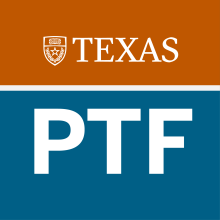Individual Fellow Initiatives

Cola Interdisciplinary Program Instructors' Community of Practice
Cohort: 2022
Fellow: Elon Lang
There are two main issues that this project hopes to address. The first is the student and instructor malaise that
has been noticed by educators and administrators across our whole campus since the return to face-to-face

Watering Two Plants With One Hose: Protocolization of Progress to Promote Practical Resource Sharing
Cohort: 2020
Fellow: Nico Osier
When I first became faculty at UT Austin, I inherited an existing course; for a variety of reasons, I felt the need to overhaul all of the lectures. This process, however, proved time-consuming and I found myself unable to complete all of the lectures as originally planned prior to the start of the semester. Moreover, even the lectures that I did overhaul continued to have flaws and I was growing increasingly frustrated with the continued inadequacy of my lessons, despite devoting considerable time and energy to them. This was disheartening and my other responsibilities (e.g.

Data Analysis Tools: Integrating Computational and Statistical Techniques in the Environmental Engineering Curriculum
Cohort: 2018
Fellow: Paola Passalacqua
The goal of this project is to train the next generation of environmental engineers in computing and statistical techniques to solve big data problems. Current undergraduate students in the Department of Civil, Architectural and Environmental Engineering have little to no exposure to computational and statistical methods for data analysis (e.g., big data collected from sensor networks). I proposed to integrate computational techniques in several courses throughout the Environmental Engineering Degree.

Curriculum Integration Through a 4-year Design Project and Cross-course Educational Tools
Cohort: 2017
Fellow: Matthew Balhoff
In many curricula students find it difficult to understand the common thread and themes between their courses until near graduation (or ever). Thus, students are unable to benefit from the synergistic nature of a fully integrated program. Courses are taught by different instructors with different teaching styles and nomenclature (a potentially good thing), but all too often even the instructors are unaware of the material or educational objectives taught in complementary courses.

